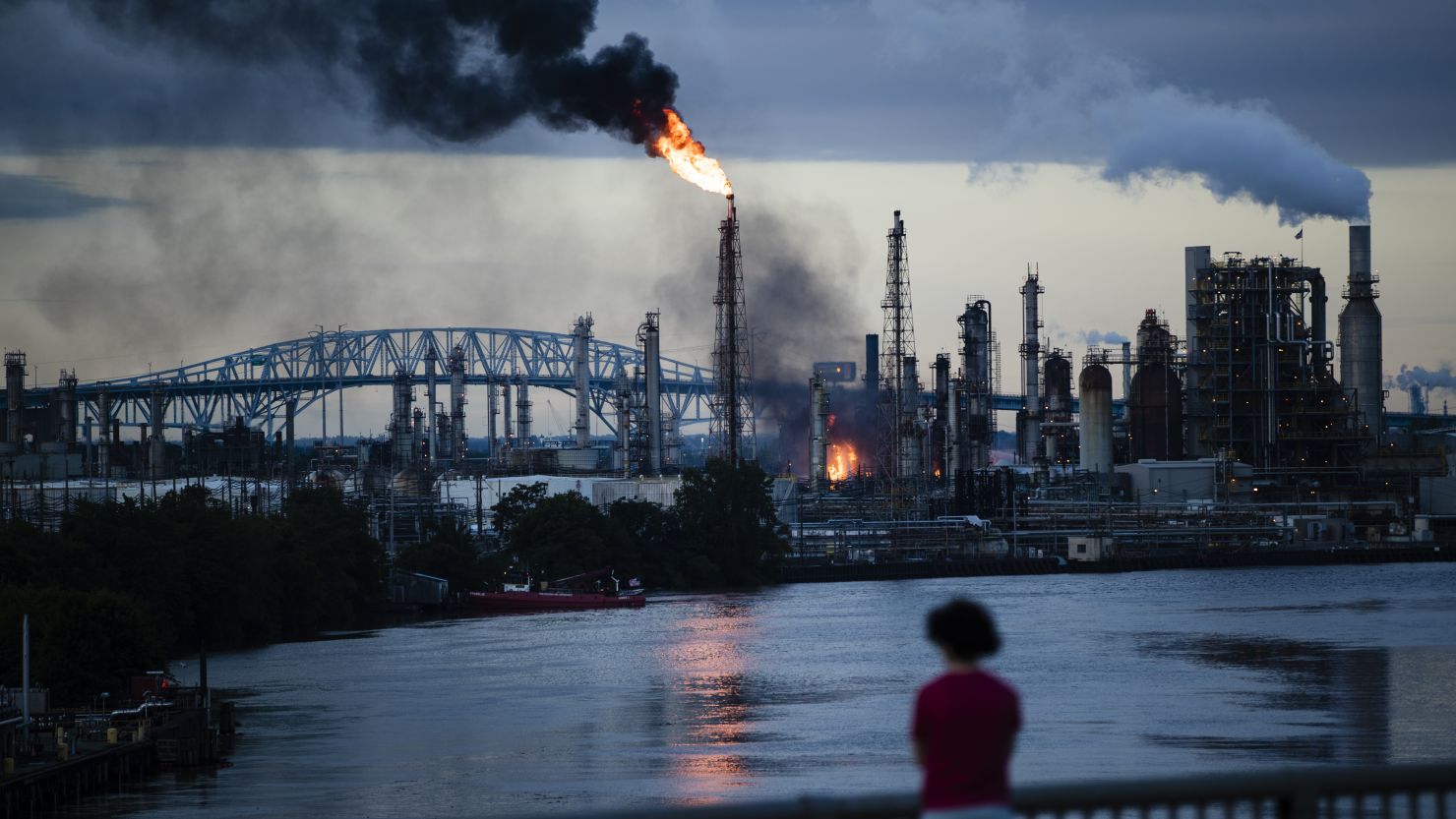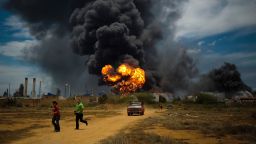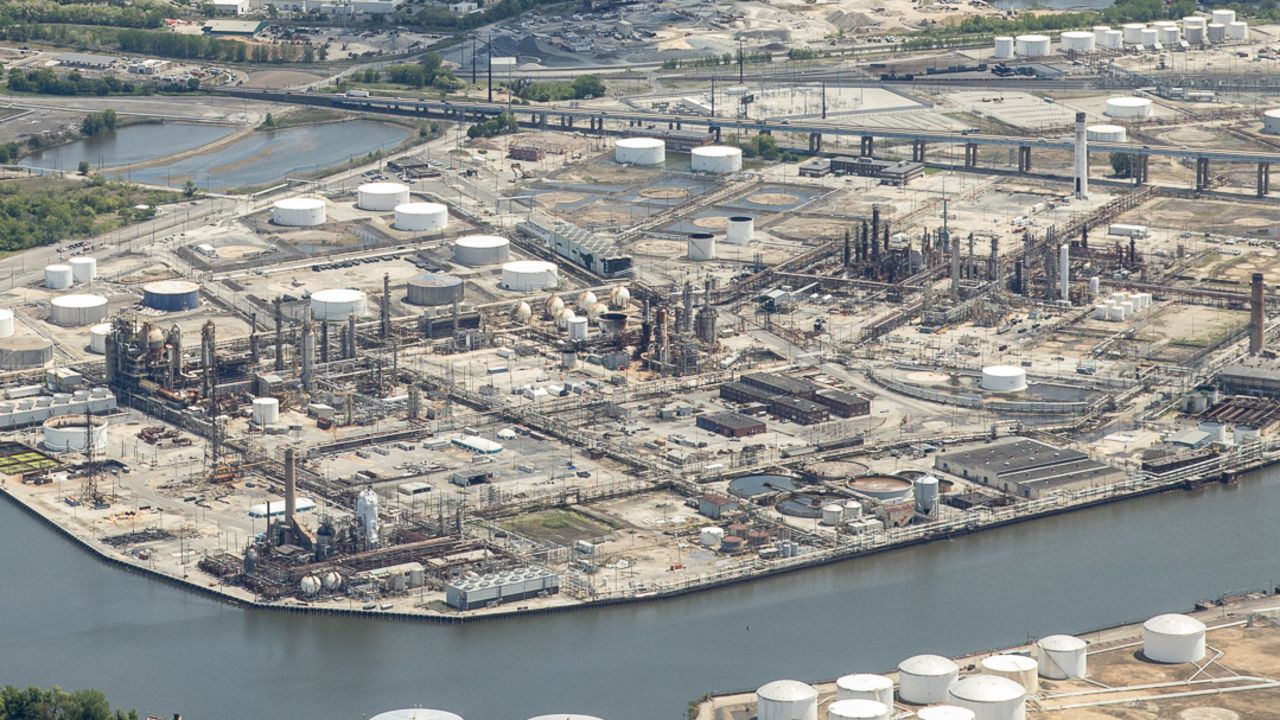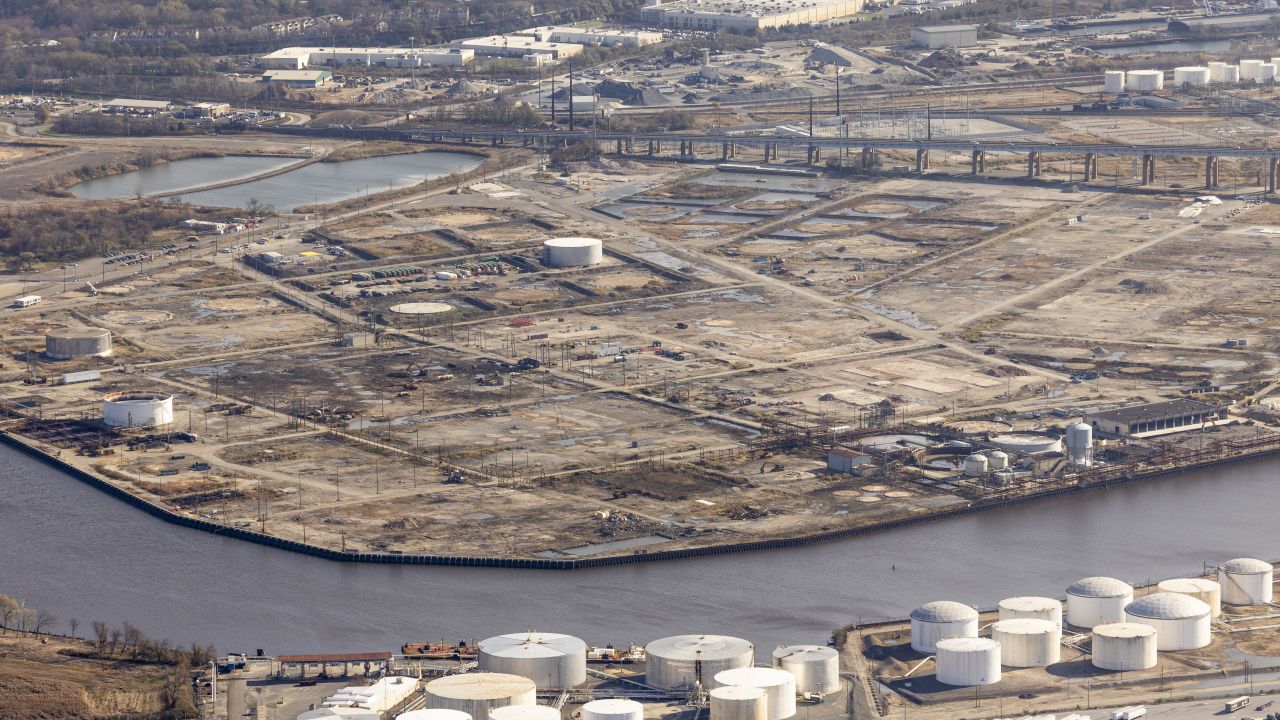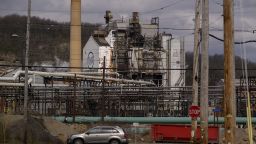Bilal Motley, utilities manager at a former Philadelphia oil refinery, was working the graveyard shift when a massive explosion broke out in the early morning hours of June 21, 2019.
He had only about an hour left of his shift, when frantic reports of a fire at the facility’s hydrofluoric acid unit came rushing in through the radios. Emergency sirens pierced the air, and soon, many of the workers were rushing to the scene of the fire.
“I’m a manager, so I have to respond to that,” Motley said. “Then I hear ‘fire at 433.’ That’s our acid unit. That’s the boogeyman.” Fearful for his life, he got in his truck and made his way to the incident.
Along the way, more explosions erupted. A leaking pipe allowed a massive cloud of explosive chemicals to form, which ignited in a series of blasts. The largest explosion sent a 38,000-pound drum fragment, about the same weight as a firetruck, across the Schuylkill River, outside of the refinery’s boundaries.
“I thought this was it,” said Motley, who worked at the refinery for nearly 15 years. “This is how I was going to die.”
Philadelphia Energy Solutions, which processed 335,000 barrels of crude oil each day, was then the largest oil refining complex on the East Coast. It produced petroleum products including gasoline, jet and diesel fuel, heating oil and petrochemicals used to make things like plastic or rubber. The vast 1,300-acre site hugged the banks of the Schuylkill River on the southern part of the city, where heavy industry has been prominent since the 1860s.
The explosion sent shockwaves across Philadelphia, particularly among the residents living less than a mile from the refinery. It wasn’t the first time the 150-year-old refinery had caught on fire. Numerous incidents have occurred at the plant in previous years, prompting local grassroots groups to protest outside the refinery’s gates. No one died from the 2019 explosions, but six workers suffered minor injuries.
Soon after the 2019 fire, the company announced it was filing for bankruptcy protection and would be shutting its doors that summer. The estimated property damage loss was roughly $750 million, the world’s third-largest refinery loss since 1974, according to a report from the US Chemical Safety and Hazard Investigation Board (CSB).
The refinery’s employees, including Motley, were let go that September.
In January 2020, a closed-door auction determined the fate of the property. With the help of climate activists who trekked to New York City to protest some of the bidders, Hilco Redevelopment Partners, a Chicago-based real estate company with a track record of turning defunct fossil fuel infrastructure into logistics centers, won the auction and now owns the property.
CNN recently joined a limited group of journalists to tour inside the property, one of a few held since PES handed over the reins to Hilco. What was once a gargantuan oil refining complex that looked like a city itself is now just empty land undergoing cleanup, with mounds of dug up soil, muddy pools of water and jagged concrete pieces strewn across the property.
Redevelopment plans are underway. Activists and nearby residents who have been subjected to the decades-long pollution from the refinery are asking Hilco to devote the land to a more sustainable use and engage with the community better when it comes to decisions that could affect their lives like past owners failed to do.
“This is absolutely the single most important development for the long-term future of Philadelphia,” said Ellen Neises, associate professor of practice in landscape architecture at University of Pennsylvania’s Weitzman School of Design.
But, for now, the 1,300-acre lot serves as a reminder of a painful past. Hundreds lost their livelihoods when the refinery shut down and promises of jobs from the development of the former refinery seem far off in the future — and some experts are skeptical they’ll ever come. The development of the land is complicated by environmental concerns, and the timeline for improvements remains unclear.
Still, some locals, some of whom continue to grapple with pre-existing health issues, are simply content that the land is finally being cleaned up and turned into something less perilous than before.
‘We lived in fear’
When the blast occurred, Sonya Sanders, a longtime South Philadelphia resident, was at a nearby hospital taking care of her husband, who was suffering from cancer. From the hospital, she could see the huge ball of fire exploding out of the refinery.
The series of blasts at the refinery were so strong they reportedly shook houses and sent soot flying across South Philadelphia. One of the explosions was detected by a meteorological satellite.
Sanders immediately thought about her son who was at home with his grandmother. She didn’t have a car, so she ran several blocks home to make sure her family was safe.
“This oil refinery was talked about and passed down through generations,” Sanders said. “In my house, we lived in fear. I got anxiety so bad today. I fear for my son.”
Sanders said it became a familiar chore for her to grab towels and blankets to fill in the gaps at the bottom of closed doors and windows to keep the smell of gas from coming inside. When the odor was strong, she said they would hide in the back room.
“Now mind you, that didn’t stop the gases from coming in, but we just had to do something,” Sanders said.

PES is no longer functioning as a refining company, but Sunoco, whose subsidiary Evergreen owned the former PES site, did not respond to requests for comment.
Like many others in the community, Sanders attributes the area’s outsized rates of cancer and respiratory illness to the pollution that’s coming from the refinery. According to data from Environmental Protection Agency, the refinery was the largest single source of air pollution in the city, yet it continued to release cancer-causing chemicals and repeatedly violate the Clean Air and Water Acts over the years it operated.
While other polluting sources may have contributed to these health outcomes, experts say the refinery “stands out as the largest emitter impacting the surrounding neighborhoods.” A database from Drexel University shows cancer rates are “significantly worse” in areas near the former refinery.
The residents living just outside the refinery’s fenceline, the majority of whom are Black and low-income, suffer from disproportionately high rates of asthma and cancer, according to data from the University of Pennsylvania’s School of Medicine. Aside from the former PES refinery, the low-income neighborhoods of Grays Ferry and Point Breeze are near major highways, the Philadelphia International Airport and other large industrial facilities that release air pollution into residential homes.
In a letter sent to the City of Philadelphia Refinery Advisory Group, which the city created in wake of the June explosion, Drexel University researchers found that people who lived near the PES refinery struggled with disproportionate levels of birth defects or preterm birth, cancer, liver malfunction, asthma, and other respiratory illnesses.
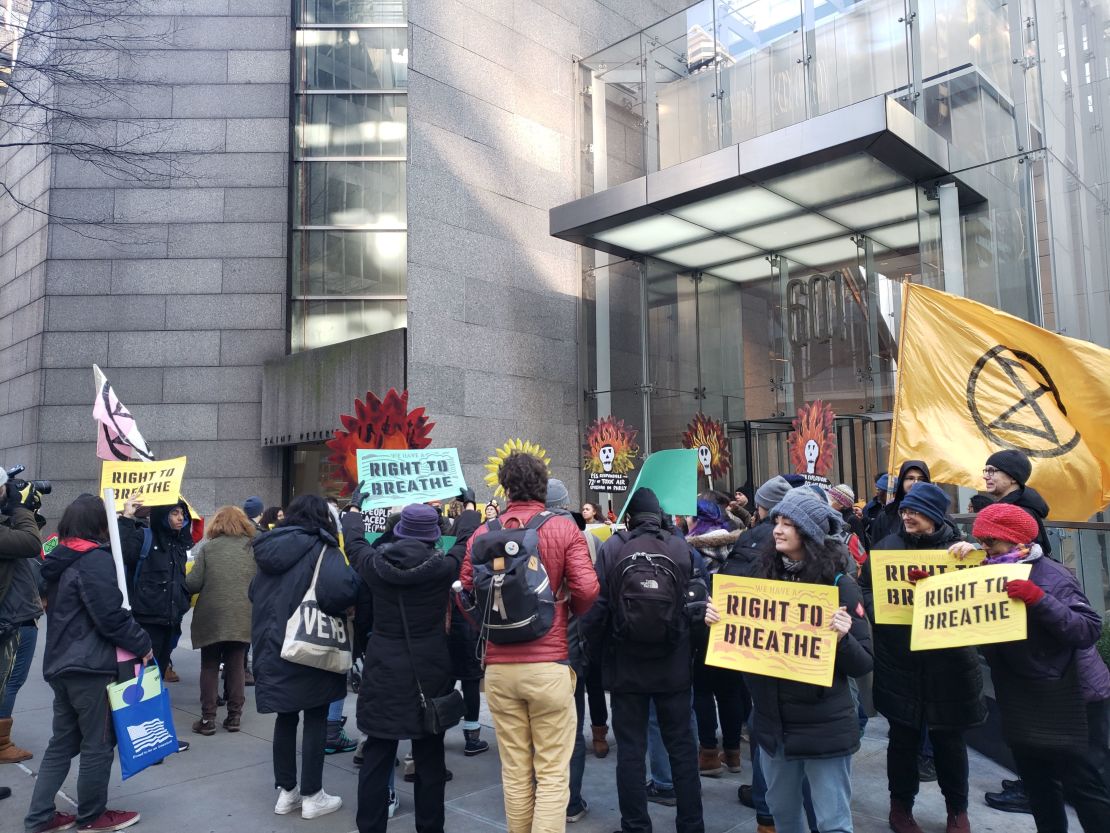
After the explosion, Philly Thrive, a local grassroots environmental justice group, drummed up its efforts to organize and rally against the refinery. The group held a series of protests at the site, hosted call banks, wrote testimonies to government officials, and traveled to New York during the closed-door auction and camped outside.
When the refinery was operating, “a lot of my neighbors were dying; people kept getting sick,” Sanders, who is a member of Philly Thrive, said. “Still, these gas spills and smells kept coming to the community. It’s all in our house. But nothing was happening. No one would answer us.”
Closing the refinery’s doors
Hilco was not the only bidder at the closed-door auction to sell the property. Industrial Realty Group (IRG), which made a higher bid than Hilco, teamed up with Phil Rinaldi, the former chief executive of PES, in an attempt to get the results of the auction voided so that the site could continue running as an oil refinery.
But a judge from Delaware, which borders Pennsylvania and where PES is registered as a company, signed off and approved the sale to Hilco, noting that the decision is in the “best interest of the community as well, given the risks that were attended to the prior operations with the refinery, and a refinery frankly that had numerous and repeated problems over the years.”
According to the CSB report, a piece of steel pipe was long overdue for replacement at the 150-year-old refinery. The pipe, containing high concentrations of nickel and copper, corroded and thinned from hydrofluoric acid which it used to make gasoline, triggering the devastating series of explosions. PES estimated the incident released roughly 676,000 pounds of combustible hydrocarbons.
The PES refinery complex was the largest source of particulate air pollution in Philadelphia. A report by nonprofit watchdog group Environmental Integrity Project also found it was producing some of the highest levels of benzene pollution of any refinery in the country.
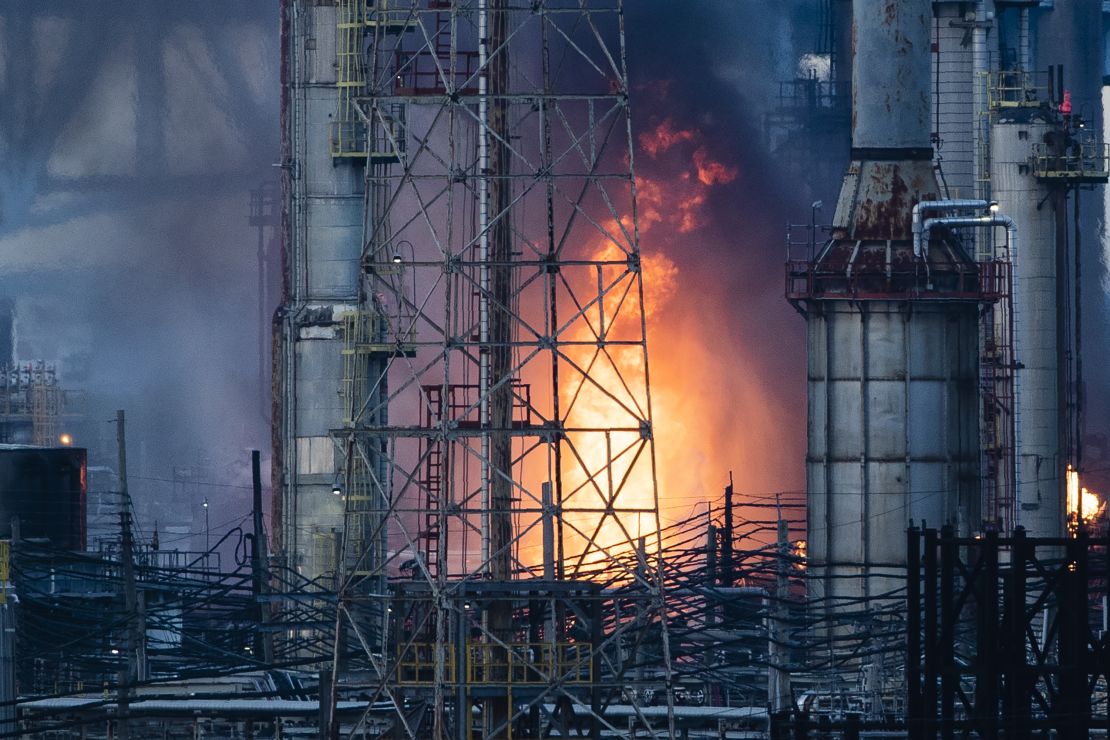
To many, it made sense to shut down the refinery. But PES also employed thousands of people in the city, prompting many employees to protest its permanent closure.
The local chapter of the United Steelworkers Union, which had more than 600 members employed at the refinery, was fighting to get jobs back. After Motley and his coworkers were laid off, the union supported the companies who made a bid to keep the refinery open and hire those who had been laid off.
“The USW did everything we could to preserve the PES refinery and the hundreds of good, community-sustaining jobs it provided,” Mike Smith, who chairs the USW National Oil Bargaining Program, told CNN in an email. “Throughout the bankruptcy process, we remained committed to finding a buyer who was invested in keeping the refinery open, and its sale to real estate developer was obviously a profound disappointment.”
Motley disagreed, despite being one of the hundreds of employees who got laid off. He wanted the opposite — for the refinery to remain closed forever.
While working at the refinery, Motley longed to be a filmmaker. He would document and record videos of his experience at the refinery. Then after the debut of his film “Midnight Oil” in 2020, which detailed life at the refinery and the dangers that come with it, he received backlash from his old coworkers.
“I would get threatening messages and people started sharing my address and things like that,” Motley said. “That was extremely scary, so I had to change my phone number. I just couldn’t take that heat, so I was torn.”
Transforming and redeveloping polluted land
For nearby residents, it’s hard to fathom how this once sprawling land of oil and steel has now been demolished and turned into relatively empty land.
“It was either us or somebody that was going to rebuy the refinery, so we happened to pay more than the group that was going to restart the refinery,” Roberto Perez, chief executive officer of Hilco, said. “It was really just a moment in time, because if it wasn’t for us in that bankruptcy process, this refinery today will be open.”
Since acquiring the property, Hilco has been working to remediate and decontaminate the site to comply with regulations set by the EPA. Now dubbed the Bellwether District, Hilco plans to redevelop the land into what it calls a “state-of the-art campus,” which will include more than 50 new buildings of warehouses and life sciences laboratories for nearby universities to use.
“We’re very conscious of the fact that we are building an asset that needs to be beneficial for the city and the community,” Amelia Chasse Alcivar, executive vice president of corporate affairs with Hilco, said, “for the fenceline and beyond, to the city and the region.”

But UPenn’s Neises said given the scale and history of the property, Hilco will need to take its time to redevelop the area of redevelopment.
“A site that’s been a refinery for 150 years where there was known leakage of benzene and oil for much of that time is a major cleanup project,” said Neises, who said she’s been attending public meetings around the redevelopment. “So that has to be patiently done in order to ensure that you’re trying to get the highest cleanup standard.”
Hilco’s planning won’t be easy, she said. For instance, some areas that Hilco is redeveloping are prone to flooding, which may only get worse with climate change. According to a report from the city, the Bellwether District is at risk of up to 4 feet of flooding and up to 6 feet of sea level rise. Following a two-year flood mitigation study, Hilco said it is currently working to raise the site out of the 100-year floodplain, while also carrying out building pads out of the 500-year floodplain.
Neises said that Hilco needs to have an “open dialogue” and be more transparent about their plans and timeline to the public. The company has held dozens of community meetings, including one with Philly Thrive, to share redevelopment plans.
Based on a commissioned third-party study, Hilco claims its project will generate 28,000 construction jobs during the redevelopment process and 19,000 permanent jobs, which surpasses the number of employees PES had in its final years. The construction work currently taking place on site already employs over two thousand workers. But Neises remains skeptical about the numbers.
“The common understanding is that, generally, big warehouses and logistics operations do not have very many employees,” she said. “The majority of the employees usually are warehouse workers or truck drivers who are passing through that site from one city to another — and those are not really new jobs.”
She also questions the number of people who will secure permanent jobs, and whether any of them will come from the surrounding neighborhoods. If Hilco is focusing on life sciences and innovation, Neises said the jobs will likely end up with people who are highly educated in those sectors.
“Developers often want the most positive visualization they can project, so that tenants are interested, and the buildings rent up and city approvals are there,” she said. “It’s a very common practice, but you’re not committed to deliver that vision.”
While it may seem as if the yearslong fight to shutter the refinery has paid off, Philly Thrive said the work isn’t done. They may have advocated for Hilco to buy the land, but they say they want a seat at the table during the planning process to determine the future of the property.
Philly Thrive’s Sanders said she simply wants Hilco to remember the residents who advocated for them to turn the site into something worthwhile.
“I want to see something that brings light to the whole situation, because there’s already been a lot of death in the area,” Sanders said. “They need something that brings life, [where we can say] look at how this has changed over time because of the community.”
This story has been updated with additional context about Hilco’s efforts.
